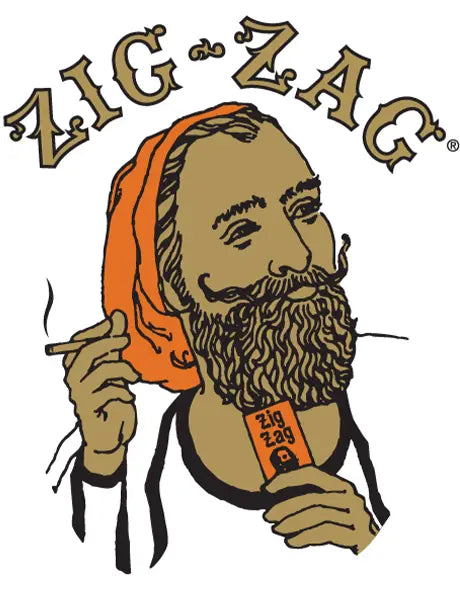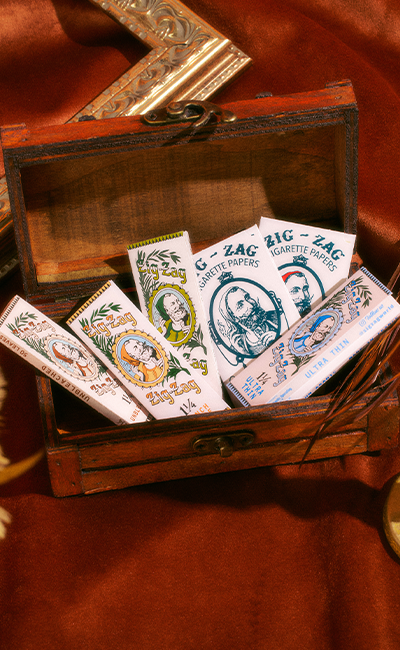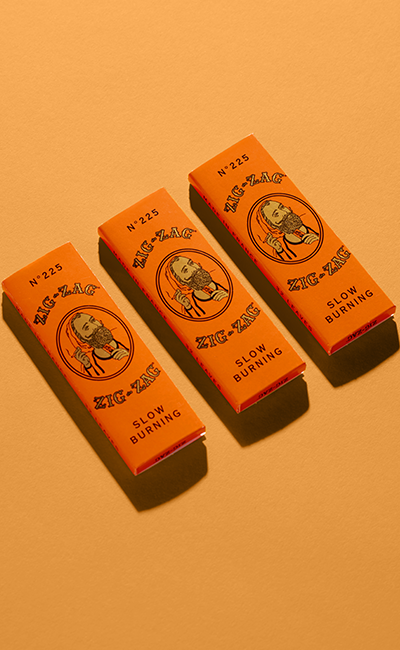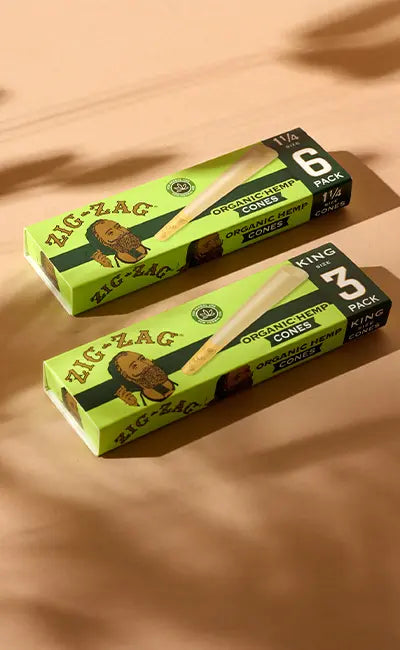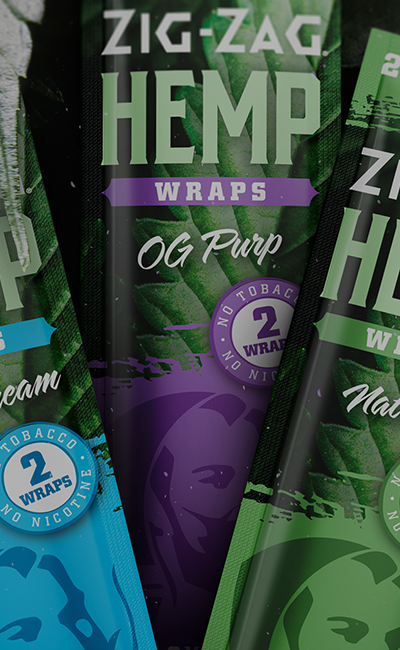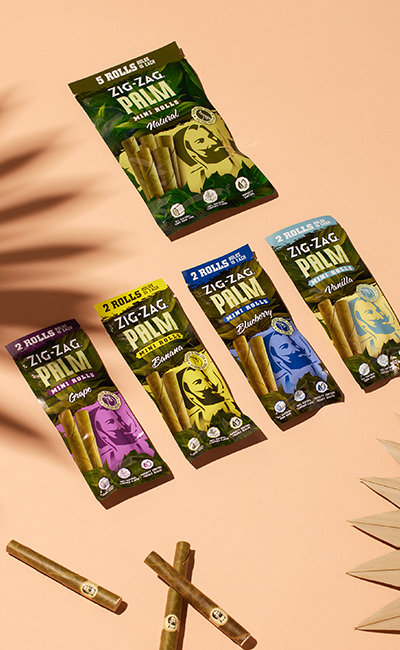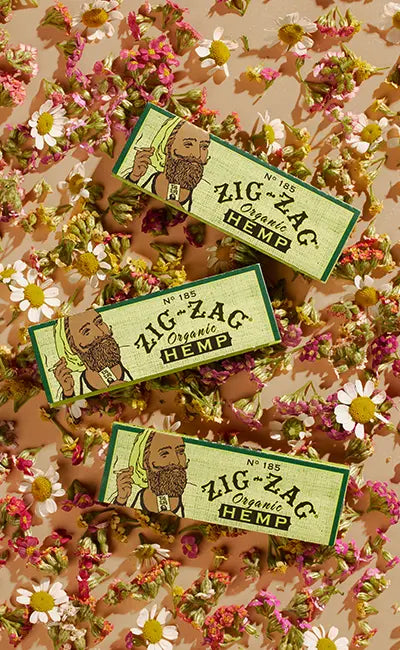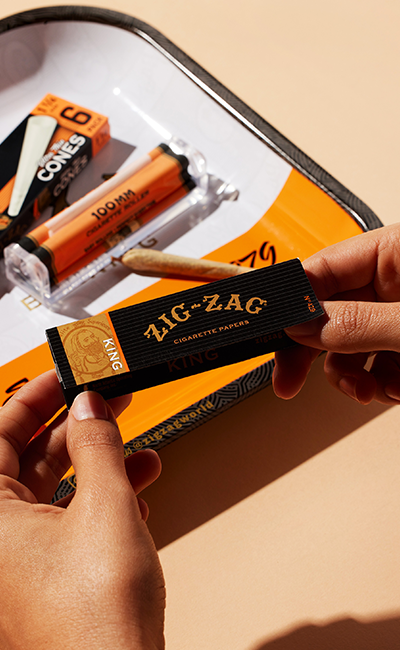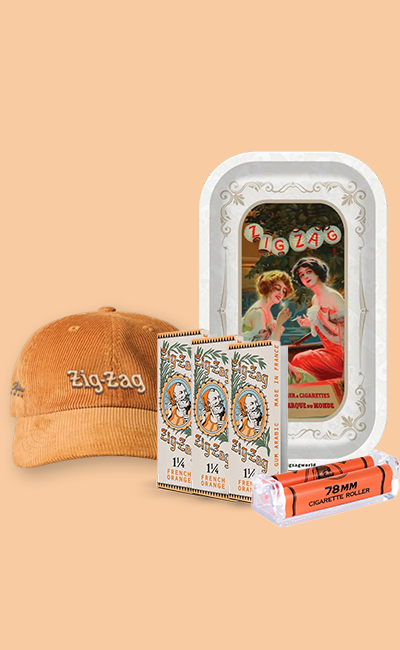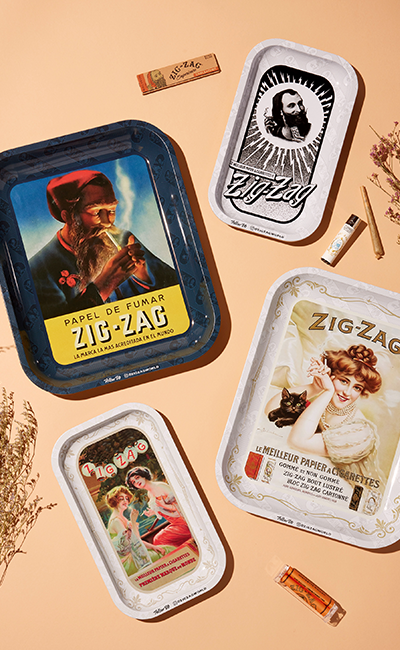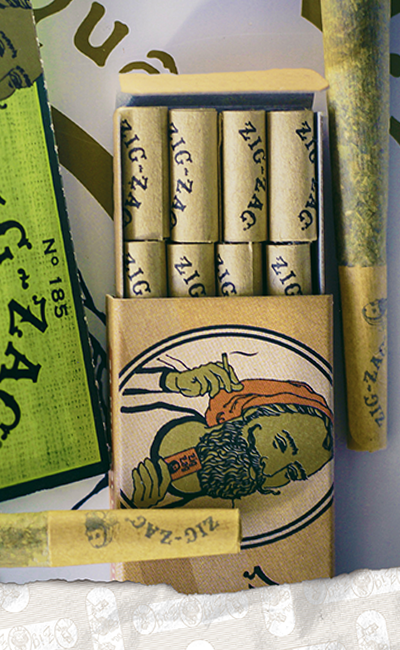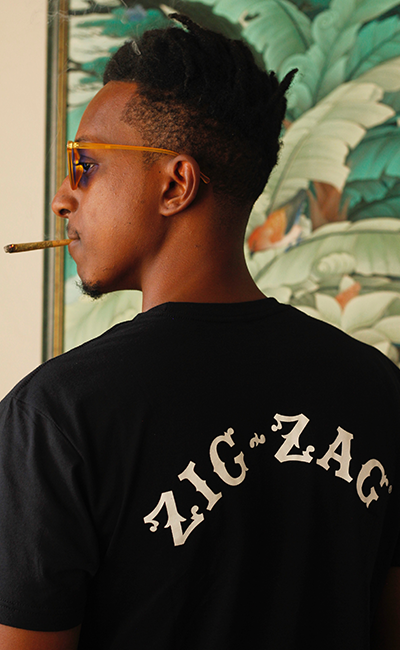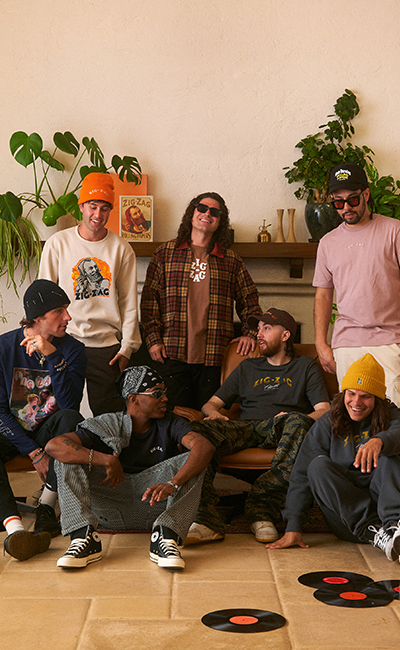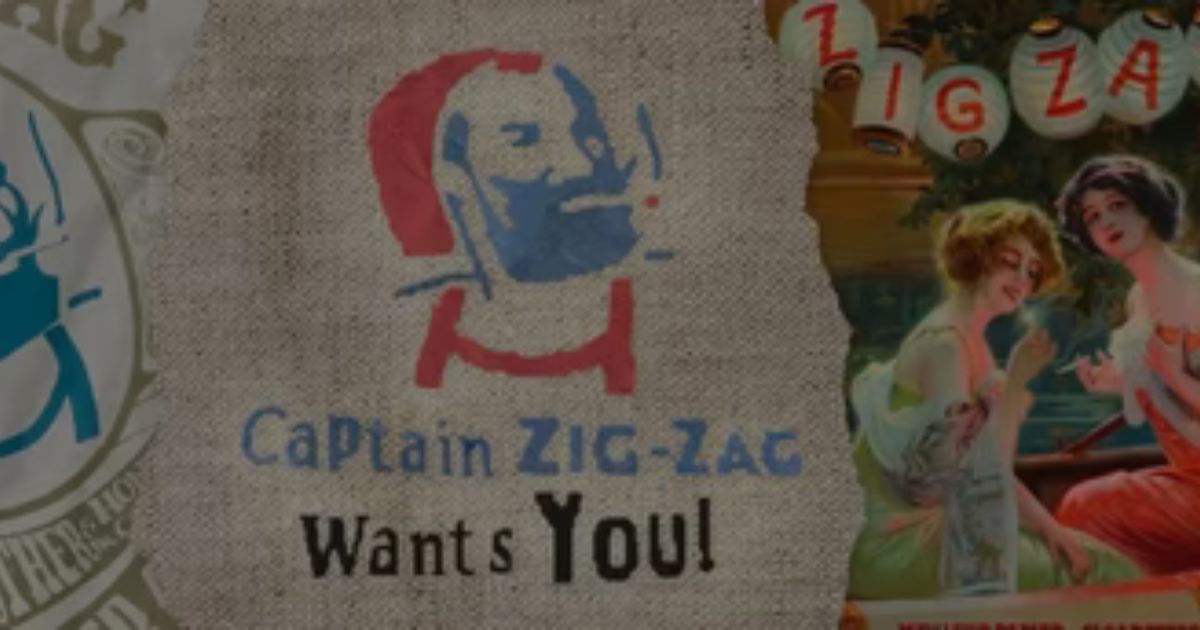Zig-Zag: A Century-Long Journey in the Paper Industry
Not many brands last over 100 years, but we’ve done exactly that. The secret? We stay true to our roots while keeping things fresh. That’s the legacy of Zig-Zag. We're proud of our past, but we're always ready to keep moving forward. We started in rolling papers and grew into a name trusted across generations. So, how did we do it?
A Brief History Of Zig-Zag
The history of Zig-Zag began over 145 years ago. Through innovation, determination, and a bit of luck, we've grown from a small French company into a global brand.
Founding and Early Innovations
Zig-Zag was established in 1855 in France by Maurice and Jacques Braunstein. They wanted to make better rolling papers and they succeeded. In 1894, the Braunstein brothers introduced the interleaving process, which allows papers to be easily dispensed one by one. This simple idea completely transformed the industry, earning Zig-Zag a gold medal at the 1900 Universal Exposition in Paris.
Resilience Through Challenges
World War II nearly ended our story when our original factory in Mantes-la-Jolie was destroyed. Yet, resilience defined us, with production swiftly moving to Thonon-les-Bains. The post-war years marked continued growth as Zig-Zag adapted to changing markets and consumer demands.
Modern Developments
In 1997, Turning Point Brands started managing our North American distribution. Later, we became part of Republic Technologies in 2000, giving Zig Zag more global reach. Recently, we introduced Zig-Zag Studios, creating fun and engaging lifestyle content. It’s our way of keeping the legacy of Zig-Zag fresh and connected to today's culture.
Zig-Zag's Evolution Beyond Paper
Being known for rolling papers helped Zig-Zag build trust with customers. People already loved our papers, so when we decided to expand, they were excited for more. But staying relevant meant we couldn't just stick to rolling papers. To keep the legacy of Zig-Zag alive, we needed to step beyond paper and bring our classic style into everyday life.
Diversification into Lifestyle Products
Today, Zig-Zag isn't just about papers. We expanded our lineup to include clothing and everyday items that carry the legacy of Zig-Zag into your daily life. Our vintage collections honor our heritage, while our apparel brings classic Zig-Zag style directly to you.
Check out what we added beyond papers:
-
Clothing Line: T-shirts, hoodies, and hats featuring iconic Zig-Zag branding.
-
Vintage Collections: Limited-edition products that connect nostalgia with today’s trends.
-
Everyday Accessories: Rolling trays, lighters, and other daily essentials to keep Zig-Zag close at hand.
Influence on Pop Culture
We’re deeply embedded in pop culture, from music albums to streetwear. Our branding appeared on iconic albums like Eazy-E's We Want Eazy and Dr. Dre's The Chronic. We've also partnered with streetwear labels to create exclusive merchandise for fans. You might even catch Zig-Zag products popping up in films and TV shows.
Here's how we've made our mark:
-
Music: Featured on famous album covers including Eazy-E’s We Want Eazy and Dr. Dre’s The Chronic.
-
Fashion: Collaborations with popular streetwear brands.
-
Film & Media: Regular appearances in movies and TV, reinforcing our cultural impact.
Commitment to Sustainability & Innovation
We care about the planet as much as we care about quality. To keep the legacy of Zig-Zag alive, we've embraced sustainable practices. Our biodegradable hemp rolling papers provide an eco-friendly alternative to traditional papers.
To take things further, we launched our "Burn One / Plant One" initiative. For every product you buy, we partner with One Tree Planted to help reforest areas around the world. It's a simple way for you to help the planet while enjoying your favorite products.
The Future of Zig-Zag
We’re always evolving to keep the legacy of Zig-Zag relevant for today’s consumers. Our expansion into lifestyle products brings a fresh lineup of apparel and accessories. Now, you can find Zig-Zag gear that fits your everyday routine.
Zig-Zag Studios is another big step forward. This creative platform brings together music, visual content, and culture to keep us connected to our community. We’re also introducing sustainable products like rose petal cones to reinforce our commitment to responsible choices.
We’re honoring our history while staying ahead of what’s next.
Zig-Zag Among Centenarian Brands
Very few brands make it past 100 years but those that do have something in common. They adapt, stay relevant, and build lasting trust with their customers. These centenarian brands have stood the test of time by evolving while keeping their core identity intact. Like other long-standing brands, we’ve grown by listening to our customers, adapting to new trends, and keeping our products relevant.
1. Coca-Cola: A Beverage Giant Since 1886
Coca-Cola is one of the most recognized brands in the world. Founded in 1886 by John S. Pemberton in Atlanta, Georgia, it started as a simple soda and quickly became a global name. Over the decades, Coca-Cola has remained a leader by adapting to changing tastes, expanding its product line, and creating some of the most memorable advertising campaigns.
2. Kellogg’s: Pioneering Breakfast Cereals Since 1906
Kellogg’s started in 1906 when W.K. Kellogg founded the company in Battle Creek, Michigan. What began as a simple breakfast cereal brand grew into a household name and expanded into a wide range of food products. Over the years, Kellogg’s stayed relevant by introducing new cereals, snacks, and convenience foods that fit changing consumer needs.
3. UPS: Delivering Packages Since 1907
UPS began in 1907 as the American Messenger Company in Seattle, Washington. What started as a small delivery service quickly expanded into one of the most reliable logistics companies in the world. Over the years, UPS adapted to changing technology while maintaining a reputation for dependable service. Today, UPS handles millions of packages daily.
4. Colgate: A Household Name Since 1806
Colgate has been a trusted name in oral care for over 200 years. Founded in 1806 by William Colgate, the company started as a soap and candle business before shifting to toothpaste and personal care. Over time, Colgate expanded globally, offering a wide range of oral hygiene products while maintaining its reputation for quality.
5. Macy’s: Retail Icon Since 1858
Macy’s has been a staple in American retail since its founding in 1858. From its famous Thanksgiving Day Parade to its flagship stores in major cities, Macy’s has stayed relevant by adapting to shopping trends while maintaining its classic department store experience.
Despite shifts in retail, Macy’s continues to serve generations of shoppers, much like how the legacy of Zig Zag keeps evolving while staying true to its roots.
6. JP Morgan Chase: Banking Since 1799
JP Morgan Chase traces its history back to 1799, making it one of the oldest financial institutions in the United States. Originally established as The Bank of The Manhattan Company, it grew through mergers and acquisitions to become a global leader in banking and finance.
Longevity in business requires trust, consistency, and the ability to adapt. JP Morgan Chase has evolved into a worldwide financial powerhouse while keeping its foundation strong.
How Centenarian Brands Stay Relevant
The most successful centenarian brands continue to grow while keeping their core identity intact. Like other brands that have stood the test of time, we’ve expanded beyond our original products, embraced new trends, and maintained a strong connection with our customers.
Adaptation and Innovation
Centenarian brands do not last by staying the same. They grow with their customers while staying true to what made them successful.
Successful brands adjust to changing consumer needs without losing their identity. For instance, Coca-Cola introduced new flavors and packaging while keeping its original formula at the core. Zig-Zag has taken a similar approach by expanding into apparel, accessories, and digital media while maintaining the quality of our rolling papers.
Technology also keeps brands relevant. For example, UPS improved package tracking with AI-driven logistics. Zig-Zag expanded its online presence with a retail platform that makes shopping more convenient.
Cultural Significance
Centenarian become part of everyday life, shaping trends and reflecting cultural shifts. Long-standing brands maintain their identity while adapting to new generations.
For instance, Coca-Cola has remained a symbol of refreshment for over a century while adjusting its messaging to fit different eras. Kellogg's built a strong breakfast culture and kept its place on tables by introducing new cereals that match changing tastes. Zig-Zag has done the same by expanding into lifestyle products while keeping our branding recognizable and trusted.
Media exposure and collaborations also keep brands relevant. Coca-Cola’s ads have featured some of the most well-known celebrities, helping it stay in the spotlight. Kellogg’s mascots, like Tony the Tiger, have been a part of pop culture for decades. Zig-Zag has been featured on album covers, in films, and through streetwear collaborations.
Resilience Through Economic and Social Changes
Staying relevant for over a century means facing economic shifts, industry changes, and evolving consumer demands. Strong brands survive recessions by adjusting their strategies without losing their identity. Here’s how some centenarian brands stayed strong during economic downturns:
-
Coca-Cola focused on affordability during the Great Depression by keeping prices low and increasing advertising to maintain customer loyalty.
-
Kellogg’s doubled down on marketing during the 1929 stock market crash, introducing new cereals and increasing its presence while competitors cut back.
-
UPS expanded its services during financial downturns by investing in logistics and efficiency to meet growing demand for global shipping.
Globalization and Expansion
Reaching a worldwide audience while maintaining brand identity is a challenge that only a few brands have mastered. Some key examples include:
-
McDonald's kept its core menu while adapting flavors to local tastes in different countries.
-
Colgate expanded internationally by ensuring that its oral care products met regional needs without changing its branding.
-
Zig-Zag grew beyond rolling papers by launching apparel, accessories, and digital content while maintaining our recognizable identity.
The Role of Branding and Marketing
Successful centenarian brands know that strong branding and smart marketing keep them relevant. The legacy of Zig-Zag has remained strong by consistently evolving our messaging while staying true to our identity. Like other long-standing brands, we have built recognition through memorable campaigns and customer loyalty.
Marketing has helped some of the biggest brands stay in the public eye for decades. Here are a few standout examples:
-
Coca-Cola’s "Share a Coke" Campaign replaced its logo with popular names, creating a personal connection with customers.
-
UPS’s "What Can Brown Do for You?" Campaign highlighted the brand’s reliability in a simple and memorable way.
-
Zig-Zag’s Branding Across Music and Fashion kept our logo in pop culture through album covers, film references, and apparel collaborations.
Sustainability and Ethical Business Practices
Centenarian brands stay relevant by focusing on more than just sales. They take responsibility for their impact on the environment and their communities. The legacy of Zig-Zag continues to grow because we prioritize sustainability and ethical business practices. Like other long-standing brands, we are committed to reducing our environmental footprint and making responsible business decisions.
Brands that last 100+ years understand the importance of sustainability. Here are some key efforts from top companies:
-
Zig-Zag introduced biodegradable hemp rolling papers and unbleached papers to reduce waste.
-
Coca-Cola invested in water conservation programs to minimize its impact on global water supplies.
-
Kellogg’s adopted food sustainability programs to improve sourcing and reduce food waste.
Corporate Social Responsibility (CSR)
Giving back to the community and making ethical business decisions strengthen customer trust. These brands have set an example:
-
Colgate runs oral health education programs to support underserved communities.
-
UPS launched carbon-neutral shipping options to address climate concerns.
-
Zig-Zag supports reforestation through the Burn One / Plant One initiative with One Tree Planted, planting trees for every product sold
Final Thoughts
Centenarian brands last because they adapt, innovate, and stay true to their roots. The legacy of Zig-Zag has followed the same path, evolving from a rolling paper company into a globally recognized name. Like other long-standing brands, we have expanded our product line, embraced new trends, and remained a cultural icon.
From our classic rolling papers to apparel, accessories, and sustainable initiatives, Zig-Zag continues to grow while keeping our identity strong. Want to be part of the next chapter in the legacy of Zig Zag? Check out our latest products or sign up for our newsletter to stay updated on new releases and exclusive drops!
